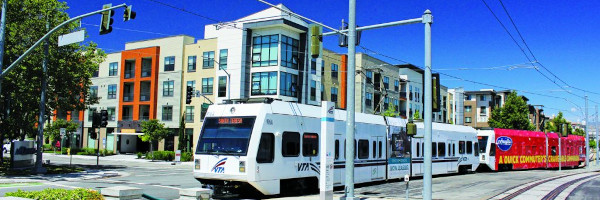Transit-Oriented Development: Difference between revisions
No edit summary |
No edit summary |
||
| Line 6: | Line 6: | ||
|chapter=5005 | |chapter=5005 | ||
|sectors=Transportation | |sectors=Transportation | ||
|summary=Transit-oriented development (TOD) is a type of urban development that is designed to create compact, walkable, pedestrian-oriented, mixed-use communities centred around public transportation. TOD typically involves the development of residential, commercial, and mixed-use buildings and facilities within walking distance of a public transportation hub, such as a subway or bus station. The goal of TOD is to create more walkable, livable, and sustainable communities by reducing reliance on automobiles and promoting the use of public transportation. | |summary=Transit-oriented development[[CiteRef::TOD 2012]] (TOD) is a type of urban development that is designed to create compact, walkable, pedestrian-oriented, mixed-use communities centred around public transportation. TOD typically involves the development of residential, commercial, and mixed-use buildings and facilities within walking distance of a public transportation hub, such as a subway or bus station. The goal of TOD is to create more walkable, livable, and sustainable communities by reducing reliance on automobiles and promoting the use of public transportation. | ||
}} | }} | ||
TOD projects often include a mix of land uses, such as housing, office space, retail, and recreational facilities, to create a vibrant and diverse community. They may also include features such as pedestrian-friendly streets, bike lanes, and public plazas to encourage alternative modes of transportation. TOD can help to reduce traffic congestion, air pollution, and greenhouse gas emissions, and can also support economic development by attracting businesses and investment to the area. | TOD projects often include a mix of land uses, such as housing, office space, retail, and recreational facilities, to create a vibrant and diverse community. They may also include features such as pedestrian-friendly streets, bike lanes, and public plazas to encourage alternative modes of transportation. TOD can help to reduce traffic congestion, air pollution, and greenhouse gas emissions, and can also support economic development by attracting businesses and investment to the area. | ||
Revision as of 06:04, March 31, 2023
| Transportation | |||||||||||
|---|---|---|---|---|---|---|---|---|---|---|---|

| |||||||||||
| Sectors | Transportation | ||||||||||
| Contact | Wilfred Pinfold | ||||||||||
| Topics |
| ||||||||||
Activities
| |||||||||||
- Authors
Transit-oriented development[[CiteRef::TOD 2012 (TOD) is a type of urban development that is designed to create compact, walkable, pedestrian-oriented, mixed-use communities centred around public transportation. TOD typically involves the development of residential, commercial, and mixed-use buildings and facilities within walking distance of a public transportation hub, such as a subway or bus station. The goal of TOD is to create more walkable, livable, and sustainable communities by reducing reliance on automobiles and promoting the use of public transportation.]]
TOD projects often include a mix of land uses, such as housing, office space, retail, and recreational facilities, to create a vibrant and diverse community. They may also include features such as pedestrian-friendly streets, bike lanes, and public plazas to encourage alternative modes of transportation. TOD can help to reduce traffic congestion, air pollution, and greenhouse gas emissions, and can also support economic development by attracting businesses and investment to the area.
Transit oriented development is also a major solution to the serious and growing problems of climate change and global energy security by creating dense, walkable communities that greatly reduce the need for driving and energy consumption. This type of living arrangement can reduce driving by up to 85%.



